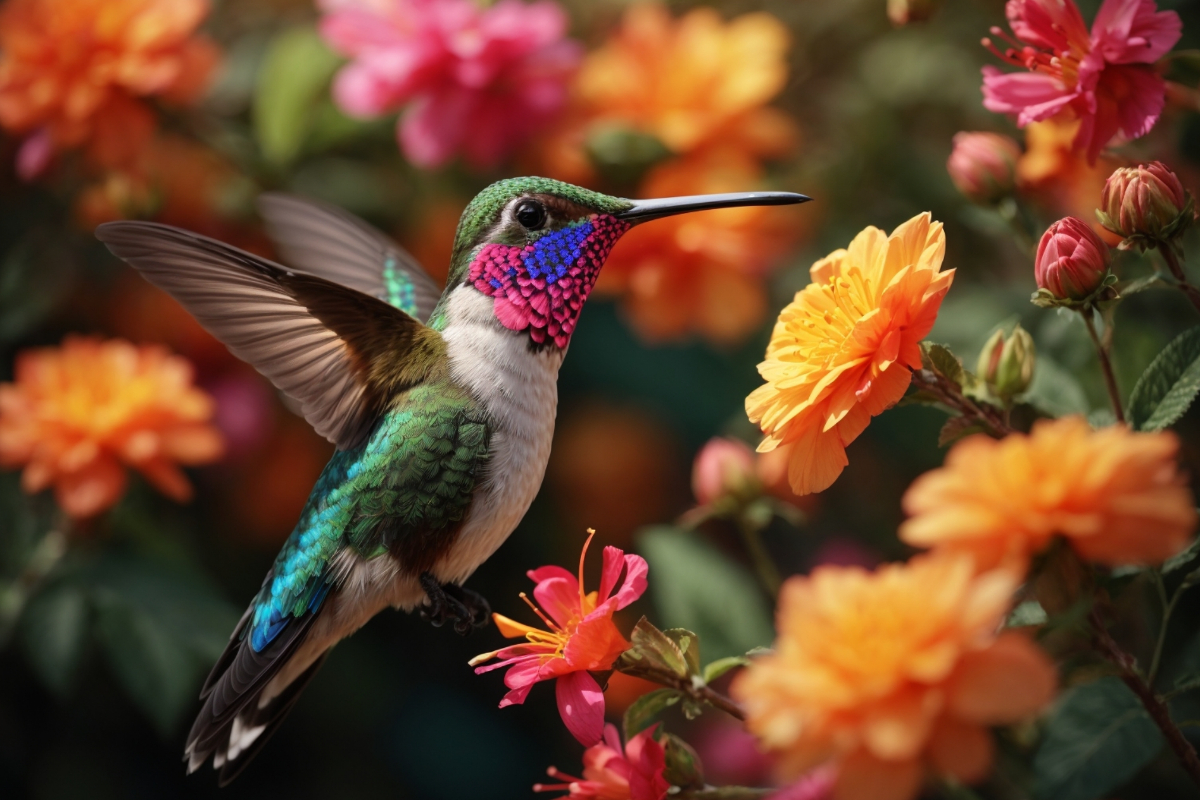Hummingbirds are truly remarkable creatures, often referred to as nature’s tiny helicopters. While we have a good understanding of the science behind large rotary wings, the complex aerodynamics of a hummingbird’s wings have remained somewhat elusive. In this article, we will delve into the world of hummingbirds and explore the mesmerizing science behind their flight.
The Secret Mechanics Behind Hummingbird Rapid Wing Flaps
Unlike most birds that flap their wings up and down, hummingbirds move their wings in a figure-eight motion. This unique wing structure allows them to generate lift on both the upstroke and the downstroke, enabling them to hover effortlessly in mid-air. During regular flights, a hummingbird can flap its wings an astonishing 50-80 times per second, making it faster than anything we can imagine. These tiny birds have pectoral muscles that make up about 25-30% of their body weight, providing them with the necessary strength for their incredible flight maneuvers.
Hovering: A Feat of Strength and Precision
Hovering is no easy task, but hummingbirds make it look effortless. They use their tail feathers as a rudder, making micro-adjustments to maintain a stable position in the air. It’s like having built-in stabilizers, allowing them to balance on a unicycle while juggling. Their ability to hover is a testament to their strength and precision.
How Do Hummingbirds Re-Fuel?
Hummingbirds have a massive appetite for their small size. They primarily feed on nectar, which provides the sugar rush they need for their high-energy lifestyles. They visit thousands of flowers daily, embarking on a non-stop foodie tour. In addition to nectar, hummingbirds also snack on insects and spiders, adding essential proteins, fats, and minerals to their diet. Their rapid metabolism allows them to digest their food incredibly quickly, with a meal of nectar passing through their system in as little as 20 minutes.
The Real-Life Hovering Champions
While drones and helicopters are our man-made answers to hovering flight, hummingbirds have been perfecting this art for millennia. They have evolved remarkable skills, including the ability to remember every flower or feeder they’ve visited and their last feeding time. Their vision is also superior, allowing them to see a broader spectrum of colors than humans. Despite their small size, hummingbirds can fly non-stop for 18 hours under the right conditions, showcasing their stamina and agility. Some hummingbird species undertake impressive migration journeys, traveling over 2,000 miles, including a non-stop 18-20 hour flight over the Gulf of Mexico.
Final Thoughts
Hummingbirds are not only beautiful but also a remarkable gift from nature. Their ability to dance in the air is a testament to their exceptional gifts. While we have explored many of the mysteries of hummingbird flight in this article, there is still much more to learn about these fascinating creatures. The beauty of nature lies in the never-ending quest to understand our environment.
